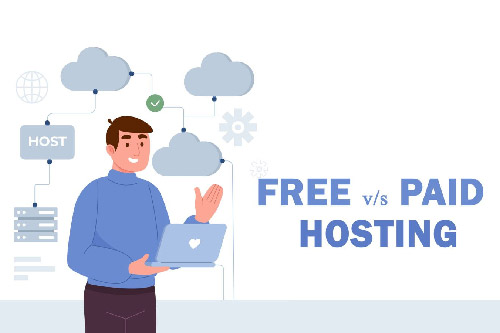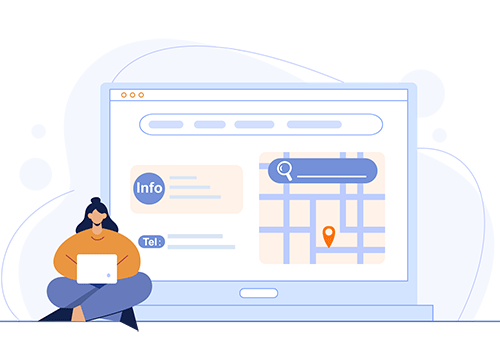Bounce Rate - A Key Website Engagement Metric
What is Bounce Rate?
If you have been following the world of digital media or have been tracking the best digital marketing agencies, you have likely heard of the term ‘bounce rate’. Ask the Top SEO Companies and they will tell you that Modern search engine optimization (SEO) is a constantly shifting environment. There is a balancing act between web page developers trying to rank as highly as possible in search rankings and search engines like Google constantly developing new tools and tweaking their algorithms to create as level a playing field as possible.
Successful SEO hinges on taking advantage of the metrics search engines use to rank search results so your web page appears in as many relevant searches as possible.
Example: If your website receives 100 visitors and 50 of them leave after viewing only the landing page, your bounce rate would be 50%.
Why is Bounce Rate Important?
While not the be-all and end-all of website success, bounce rate offers valuable insights into user experience (UX) and Search Engine Optimization (SEO):
- User Experience (UX): A high bounce rate can signal issues with page design, content relevance, or site navigation, indicating that visitors are not finding what they expected.
- Search Engine Optimization (SEO): Search engines like Google consider bounce rate as a factor in ranking websites. A high bounce rate might suggest to search engines that the page content is not relevant to the search query, potentially affecting your organic search visibility.
Interpreting Bounce Rate:
A high bounce rate isn't always bad; context matters. Here's what to consider:
- Page Type: Single-page websites (like blogs) naturally have higher bounce rates than multi-page sites.
- Traffic Source: Visitors from social media or referral links might have different expectations and, therefore, different bounce rates.
- Industry Benchmarks: Compare your website's bounce rate to industry averages to get a better sense of its performance.
How to Reduce the Bounce Rate?
If your site’s goal is to simply attract users to the page, then they likely won’t be performing any further actions beyond investigating the result page. If your high-intent pages are showing a high bounce rate, then you need to reexamine your approach to these pages.

From a holistic SEO standpoint, this could mean altering your content, restructuring the linking on your site’s pages, or transforming your marketing approach to encourage more user engagement. This can be done by working in collaboration with branding agencies in the market.
If you have a single-page website like a scrolling blog, then you should expect a 100% bounce rate and there is no real reason to attempt to lower it. There are several techniques for lowering your bounce rate, but the best methods will vary for each individual website.
If users are visiting one of your landing pages after searching for relevant keywords but clicking away, then it’s likely that the experience your search result landing page provided didn’t meet the user’s expectations. You can adjust your bounce rate by calculating the time users spend on a page or use Google Tag Manager for further customization and segmentation.
You can set different “events” in your Google Analytics tool so it will track single-page sessions appropriately.
For example,
if the goal of a particular website is just to play a video for a user, then watching that video should count as a zero percent bounce rate. You can make almost any event an “interaction” in your Google Analytics dashboard so you can more accurately assess your pages’ performance.
How to Audit Your Bounce Rate?

Bounce rate generally only influences the profitable pages on your site, so creating a profit index is a good way to track the aspects of your high-intent profitable pages. Your profit index should include the pages that lead to the most successful conversions or transactions.
Without a profit index, you may wind up wasting time and resources improving essentially inconsequential pages that have no real bearing on your conversion rate or the number of successful transactions resulting from searches.
By using a profit index to improve the bounce rate on your profit-driven pages, you are essentially ensuring that the optimization efforts you conduct will impact your bottom line. Google Analytics allows you to sort your profit index table so you can determine which parts of your site are the most successful and which ones need improvement.
For example,
If a landing page seems to lead to conversions more than your blog pages, you may need to enhance the quality of your blog posts.
Google Analytics will quickly point out which areas of your site are struggling with higher-than-desirable bounce rates. You may need to adjust your keyword strategy or linking habits and stop attempting to draw traffic from low-value channels. You may also need to develop better landing pages that meet users’ expectations when clicking on them from search results.
Landing pages should also have clear calls to action that encourage a visitor to take a specific action, such as signing up for your newsletter, downloading a freebie, or making a purchase. Calls to action need to be relevant to the content of their landing pages for better user experiences.
Segmented Bounce Rates
It’s also important to avoid judging different areas of your website on the same standards. Your overall bounce rate may seem high, but when you break it down and track the various areas of your site, you may find that only a few areas are leading to more bounces than others.
A few adjustments in these areas can help bring the overall bounce rate down, so segmented bounce rate tracking provides more accurate insight into the things you can do to improve.
You can segment your bounce rate tracking by date, page, or combination of different metrics. You can also check to see how your bounce rate fluctuates based on traffic channels.
For example,
The landing pages linked from social media posts may report high bounce rates, indicating that users’ experiences on those pages are not consistent with the expectations built from reading your social media posts.
If you notice a lower bounce rate after producing a particular type of content, then this could be a sign that your audience prefers that type of content and is more likely to further engage your website after consuming that type of content. It is essential to use this information to your advantage. Become aware of the type of content that works and does not work for you. Make a list of it. Revise the content and the manner in which it is presented with help from the best Web design companies.
















